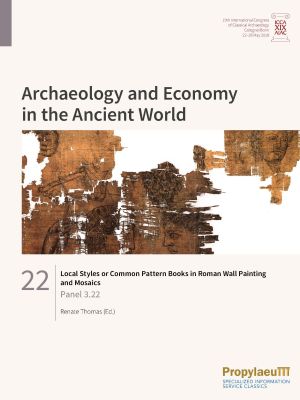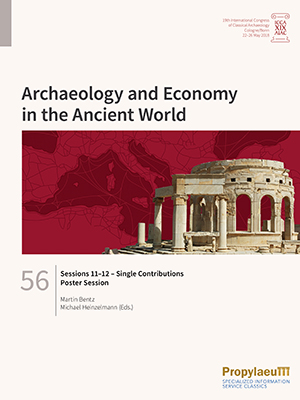Falzone, Stella
Local Styles or Common Pattern Books in Roman Wall Painting and Mosaics: Panel 3.22
The presentations of the panel "Local styles or common pattern books in Roman mural painting and mosaics" illustrated various aspects of the working methods of ancient workshops and their production. I. Bragantini used the example of the wall paintings in Cartagena and Lyon to emphasise these were made by Italian workshops that in her opinion. While St. Falzone, M. Marano and P. Tomassini focused on the characteristics of the local style in wall painting in Ostia, C. Sbrolli concentrated on the iconographic characteristics of the 'Workshop of the Vetti' in Pompeii. E. Moormann and D. Esposito investigated the question of whether the development of wall painting in Flavian times testified to continuity or a new impulse. C. Boschetti et al. highlighted the differences in the production of mosaics in Aquileia between the Augustan period and the 4th century AD: while the first workshops worked with high quality materials from Campania and probably came from there, the later mosaicists were probably local, as they used cheap materials available locally. B. Tober pointed out that there was an 'international' agreement on the manner of appointing certain room for certain functions. E. Aydogdu and A. Kazim Öz used a mosaic in Metropolis as an example to show that three-dimensional leaf patterns are also based on models that go back to geometric forms.
Sessions 11–12, Single Contributions – Poster Sessions
Economic aspects permeate all areas of public and private life in ancient societies, whether in urban development, religion, art, housing, or in death. Research on ancient economies has long played a significant role in ancient history. Increasingly in the last decades, awareness has grown in archaeology that the material culture of ancient societies offers excellent opportunities for studying the structure, performance, and dynamics of ancient economic systems and economic processes. Therefore, the main objective of this congress was to understand economy as a central element of classical societies and to analyse its interaction with ecological, political, social, religious, and cultural backgrounds. The theme of the congress was addressed to all disciplines that deal with Greco-Roman civilization and their neighbouring cultures from the Aegean Bronze Age to the end of Late Antiquity.
In this collective volume, single contributions from sessions 11 and 12 deal with digital topics such as computational approaches and 3D documentation in archaeology and building research. On the other hand, the studies include topics on ancient sculptures and sanctuaries as well as the rituals associated with them.
Furthermore, the numerous transcribed posters which have been presented and discussed during the congress week in the context of a poster session are published in this volume.








